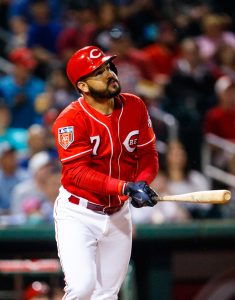Major League Baseball’s collective bargaining agreement contains a provision that allows certain free agents who are signed to minor league contracts to receive a $100K retention bonus if they are not on the team’s 25-man roster or the Major League disabled list five days prior to the season.
Free agents who qualify for this distinction are those who have at least six years of Major League service time and had a Major League contract expire at the end of the previous season, but signed a minor league deal ten or more days prior to Opening Day.
The deadline for teams to decide on these players is today at 11am central time. By the deadline, teams with these players in camp need to decide whether to:
- Add the player to their 25-man roster or Major League disabled list (or agree to do so in writing).
- Pay the player a $100K retention bonus to keep him in the organization beyond the deadline and send him to the minors.
- Grant the player his outright release from the minor league contract so that he may pursue opportunities with other teams.
We’ll use this post to keep track of the Article XX(B) free agents whose respective teams have elected option one or two; in other words, players who won’t be released for the time being. The most recent updates are on top.
- Miguel Montero has been informed that he’ll make the Nationals as the club’s backup catcher, according to Jamal Collier of MLB.com. He’ll earn a $1.3MM base salary, as outlined in the details of the pact he signed with the club on February 1st. Montero beat out young backstop Pedro Severino in a camp battle for the role.
Earlier…
- Right-handed reliever Fernando Salas will make the Diamondbacks’ opening day roster, Zach Buchanan of The Athletic reports. He’ll join a relief crew that seems somewhat thin behind Archie Bradley, Brad Boxberger and Yoshihisa Hirano. The 32-year-old pitched to a 5.22 ERA across 58 2/3 relief innings last season between the Mets and the Angels. In a related move, the team has designated Rule 5 pick Albert Suarez.
- Indians manager Terry Francona announced today that reliever Matt Belisle will be the seventh member of the club’s opening day bullpen (hat tip to Jordan Bastian of MLB.com). Belisle had been competing with Carlos Torres for the final relief job; he pitched to a 4.03 ERA while saving 9 games for the Twins last season.
- Danny Valencia has been added to the Orioles’ roster, Eduardo A. Encina of the Baltimore Sun tweets. Valencia stated a while back that he had no plans to go to the minors if he didn’t make the big league club, so adding the corner infield to their roster was Baltimore’s only path to retaining him. He’ll prove a right-handed-hitting complement to first baseman Chris Davis.
- The Reds have informed middle infielder Cliff Pennington that he’ll make the major league club, John Fayman of the Cincinnati Enquirer reports via Twitter. He’ll serve as a bench player for a rebuilding Cincinnati club while top prospect Nick Senzel gets more seasoning at the Triple-A level. Pennington hit .253/.306/.330 for the Angels last year.

